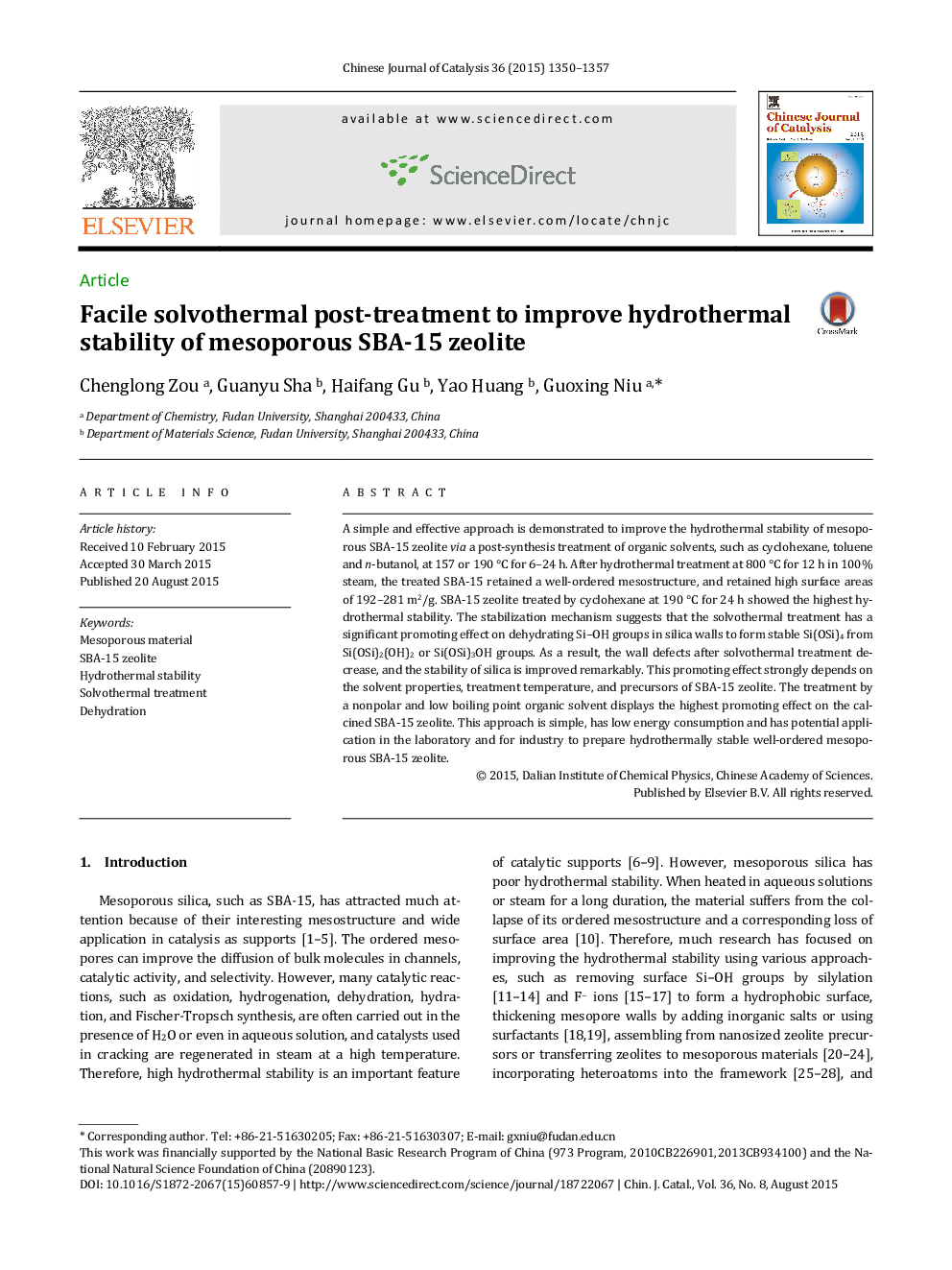| Article ID | Journal | Published Year | Pages | File Type |
|---|---|---|---|---|
| 59495 | Chinese Journal of Catalysis | 2015 | 8 Pages |
A simple and effective approach is demonstrated to improve the hydrothermal stability of mesoporous SBA-15 zeolite via a post-synthesis treatment of organic solvents, such as cyclohexane, toluene and n-butanol, at 157 or 190 °C for 6–24 h. After hydrothermal treatment at 800 °C for 12 h in 100% steam, the treated SBA-15 retained a well-ordered mesostructure, and retained high surface areas of 192–281 m2/g. SBA-15 zeolite treated by cyclohexane at 190 °C for 24 h showed the highest hydrothermal stability. The stabilization mechanism suggests that the solvothermal treatment has a significant promoting effect on dehydrating Si–OH groups in silica walls to form stable Si(OSi)4 from Si(OSi)2(OH)2 or Si(OSi)3OH groups. As a result, the wall defects after solvothermal treatment decrease, and the stability of silica is improved remarkably. This promoting effect strongly depends on the solvent properties, treatment temperature, and precursors of SBA-15 zeolite. The treatment by a nonpolar and low boiling point organic solvent displays the highest promoting effect on the calcined SBA-15 zeolite. This approach is simple, has low energy consumption and has potential application in the laboratory and for industry to prepare hydrothermally stable well-ordered mesoporous SBA-15 zeolite.
Graphical AbstractA simple approach was proposed to improve the hydrothermal stability of SBA-15 via solvothermal treatment by forcing Si–OH groups in the walls close together, dehydrate, crosslink, and promote the silica condensation degree.Figure optionsDownload full-size imageDownload as PowerPoint slide
